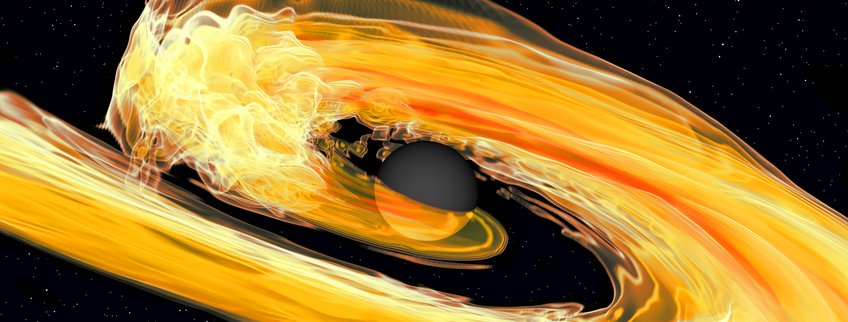
Neutron-Star – Black-Hole Coalescence
with tidal disruption
The images show a simulation of a neutron-star–black-hole coalescence in which the neutron star is tidally disrupted during the merger.
In general, tidal disruption is present for low-mass black holes, prograde black hole spins, or large neutron star radii. However, such scenarios seem less present in nature, e.g., the neutron-star–black-hole coalescences GW200105 and GW200115 showed both no sign of tidal disruption.
Credit
Numerical relativity simulation: S.V. Chaurasia (Stockholm University), T. Dietrich (Potsdam University and Max Planck Institute for Gravitational Physics)
Scientific visualization: T. Dietrich (Potsdam University and Max Planck Institute for Gravitational Physics), N. Fischer, S. Ossokine, H. Pfeiffer (Max Planck Institute for Gravitational Physics), T. Vu
Acknowledgments
We acknowledge support through the High-Performance Computing Center Stuttgart (HLRS) through project GWanalysis (project 44189) for HAWK, through the Norddeutsche Verbund für Hoch- und Höchstleistungsrechnen (project bbp00049), and through the PDC Center for High Performance Computing (SNIC 2020/1-34) for Beskow. This support enables our simulations of black hole - neutron star systems.
Note: Publication of these images and movies requires proper credits and written permission. Please contact the AEI press office in advance of publication or for higher-resolution versions.



